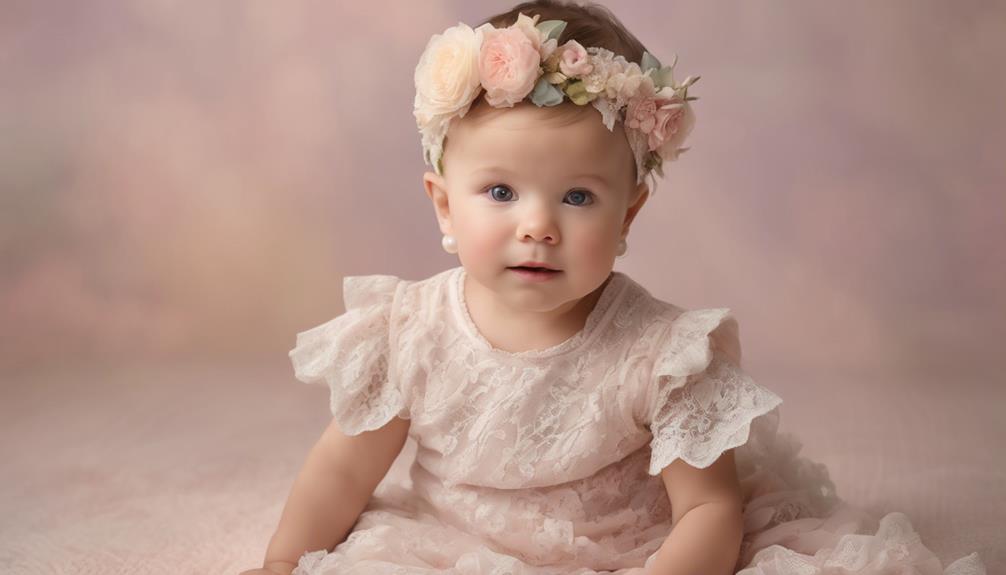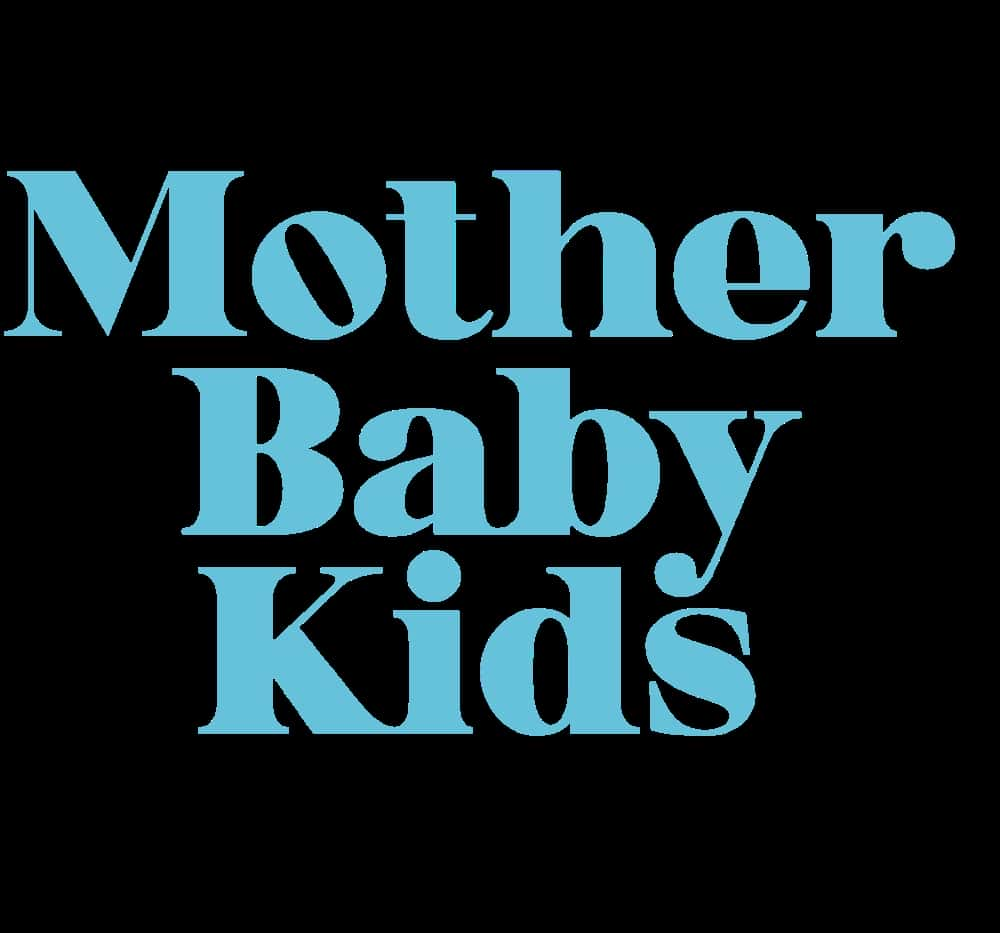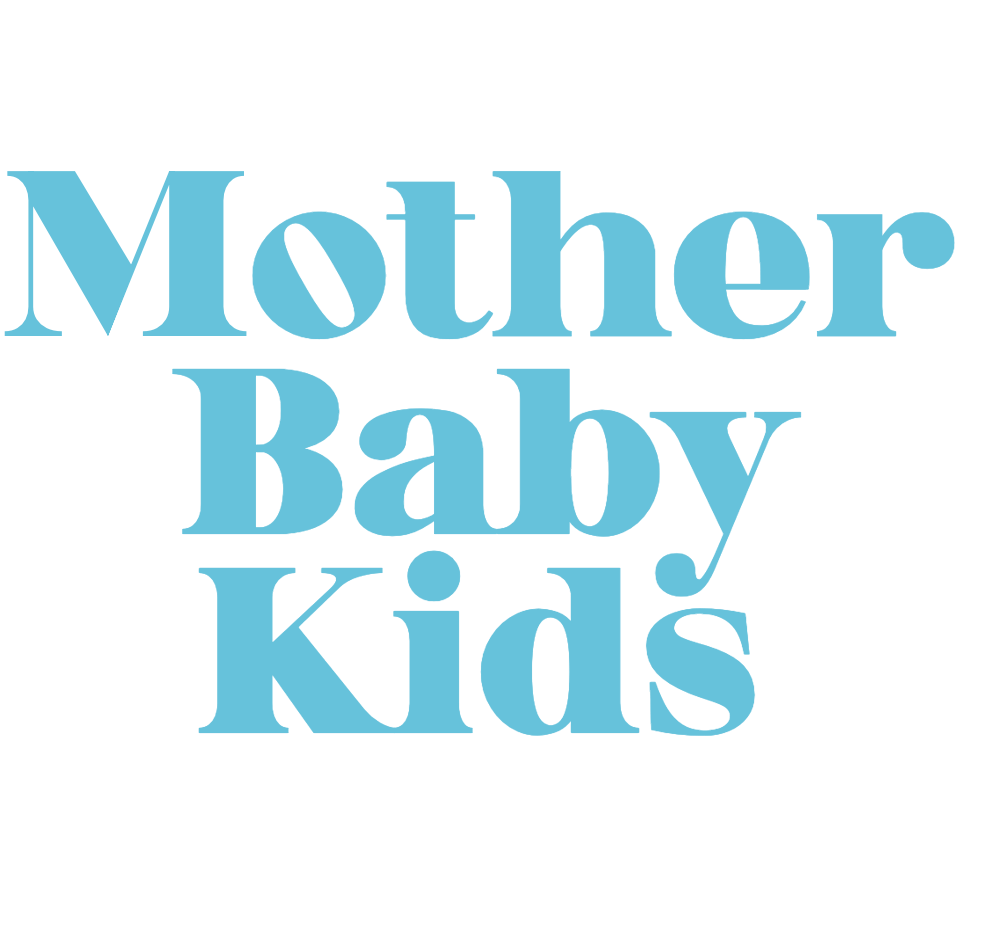Newborn Care
How to Dress Your Reborn Baby Doll: Clothes Guide
Uncover the secrets to dressing your reborn baby doll in the most realistic and charming way possible – you won't want to miss out on these essential tips!

When outfitting your reborn baby doll, remember the significance of choosing attire that provides comfort as well as the ability to move freely. Properly dressing your doll not only improves its look but also adds to its authentic appeal.
As you navigate the intricacies of dressing your reborn baby doll, consider the impact of color choices and fabric selection on its lifelike portrayal. Remember, every outfit choice plays a role in capturing the essence of your reborn baby doll, making the process both an art and a craft worth exploring further.
Key Takeaways
- Select clothes based on size and weight for a realistic fit.
- Coordinate colors, patterns, and styles for a cohesive look.
- Use accessories like pacifiers and hats for added realism.
- Follow care tips to maintain the quality and appearance of the outfits.
Choosing the Right Size
When dressing your reborn baby doll, make sure you choose the right size clothes based on their weight and length for a comfortable and realistic fit. These dolls come in various sizes, ranging from 1.5lb-3lb to 5lb-8lb, so selecting the appropriate size category is important. Opting for premature baby clothing is also a great choice since these tiny outfits are perfect for the small stature of reborn dolls.
To enhance the realism of your doll, consider gender-specific clothing options. Dressing a boy doll in outfits designed for boys and a girl doll in feminine attire can add a touch of authenticity to your playtime. Remember, avoiding clothes that are too tight as they can restrict your doll's mobility and cause discomfort. By choosing the right size clothes based on your reborn baby doll's weight and length, you can make sure they look adorable and feel cozy in their outfits.
Seasonal Dressing Tips

To confirm your reborn baby doll is dressed appropriately for the changing seasons, consider these practical tips for selecting the right outfits. When dressing your reborn baby doll, it is crucial to keep in mind the seasonal variations in temperature and style. For colder seasons, layering clothes like sweaters and jackets can keep your reborn cozy and fashionable. In contrast, opt for lighter fabrics and breathable materials during summer to prevent overheating. Spring calls for bright and colorful outfits that reflect the vibrancy of the season, while fall outfits can consist of cozy essentials like sweaters and leggings for a snug look. Don't forget to accessorize with hats, scarves, and mittens to complete the seasonal wardrobe and add flair to your reborn baby doll's ensemble.
| Season | Clothing Tips | Accessories |
|---|---|---|
| Winter | Layer with sweaters and jackets for warmth | Knit hats and mittens |
| Summer | Choose light and breathable fabrics | Sun hats and sunglasses |
| Spring | Opt for bright and colorful outfits | Flower headbands |
| Fall | Cozy up with sweaters and leggings | Scarves and boots |
Mix and Match Outfits
For a versatile and stylish wardrobe for your reborn baby doll, embrace the creativity of mixing and matching outfits to create unique looks. Coordinate colors, patterns, and styles to achieve a cohesive and fashionable ensemble. Experiment with layering pieces like sweaters, jackets, and accessories to add depth and versatility to your baby's outfit. By combining different clothing items such as dresses, tops, bottoms, and shoes, you can discover endless possibilities for creating adorable outfits for your reborn doll.
When mixing and matching outfits, have fun exploring various combinations that showcase your creativity and personal style. Try pairing a cute patterned top with solid-colored bottoms, or mixing different textures like denim with soft fabrics. Don't be afraid to play around with accessories like hats, bows, or scarves to add an extra touch of charm to the overall look. The key is to experiment and find combinations that make your reborn baby doll look irresistibly cute in every outfit you create.
Accessorizing Your Doll

Enhance the realism and charm of your reborn baby doll by carefully selecting and incorporating accessories that add personality and style to its appearance. Accessories play an important role in transforming your doll into a lifelike companion. Consider items like pacifiers, hats, and blankets to add authenticity to your doll's ensemble. For interactive play, baby bottles, diaper bags, and strollers can enhance the experience. To achieve a coordinated look, accessorize with matching jewelry, shoes, and hair accessories. Themed accessories such as holiday outfits, sports gear, or seasonal items can bring a touch of whimsy to your doll's wardrobe. For a personal touch, explore custom-made accessories or engage in DIY projects. Remember, accessories are not just embellishments but essential elements that complete the look of your reborn baby doll.
| Accessories | Description |
|---|---|
| Pacifiers | Add realism and charm |
| Baby Bottles | Enhance interactive play |
| Matching Jewelry | Coordinate the look |
| Themed Accessories | Bring variety to the wardrobe |
Care and Maintenance Tips
How can you effectively maintain the quality and appearance of your reborn baby doll's clothing and accessories?
Taking care of your reborn baby doll's clothes is vital to make sure they look their best for a long time. Here are some practical tips to help you keep your baby doll's outfits in top condition:
- Gently hand wash clothes: To preserve the fabric quality and prevent any damage, opt for handwashing over machine washing.
- Air dry outfits: Maintain the shape of the clothes and prevent any shrinking by allowing them to air dry instead of using a dryer.
- Store clothes properly: Keep the clothes in a cool, dry place to prevent moisture build-up and mold growth, which can damage the fabric.
- Use mild detergents: Choose mild detergents to prevent fading and maintain the vibrant colors of your baby clothes.
Frequently Asked Questions
What Size Clothes Do Reborn Dolls Wear?
For your reborn doll, sizes vary from 1.5lb to 8lb. Match their weight to clothes designed for 1.5lb-3lb, 3lb-5lb, 4-7lb, or 5lb-8lb ranges. Opt for premature baby attire for a perfect fit and realistic look.
What Do You Need for Your First Reborn Baby?
For your first reborn baby, you'll need love, care, and attention. Equip yourself with clothes that fit well, are comfy, and stylish. Consider materials carefully, avoid tight fits, and keep an eye on trends without breaking the bank.
Can Baby Dolls Wear Baby Clothes?
Yes, baby dolls can wear baby clothes. Look for tiny sizes like preemie or micro preemie. Clothes labeled for 1.5lb-8lb work well. Opt for gender-neutral options. Make sure clothes are soft, gentle, and free of embellishments that could harm the doll's vinyl.
Can Reborn Dolls Get Wet?
You should avoid getting your reborn doll wet. Water can damage its delicate features and materials, leading to color bleeding, fabric shrinking, and hair clumping. To maintain realism, keep your reborn baby dry.
Conclusion
To sum up, dressing your reborn baby doll is a fun and creative way to express your style and personality. By choosing the right size, following seasonal dressing tips, mixing and matching outfits, accessorizing your doll, and practicing proper care and maintenance, you can keep your doll looking stylish and realistic.
Remember, the key is to have fun and be creative while ensuring your doll is comfortable and well-cared for. Enjoy dressing up your reborn baby doll!
With over a decade of experience in editorial leadership, Esther has been at the helm of Mother Baby Kids since its inception. Her journey into parenting content was inspired by her own experiences as a mother, navigating the joys and challenges with a desire to support other parents. Esther is passionate about storytelling that connects, educates, and empowers families from all walks of life.
Breastfeeding/Formula Feeding
Creating a Newborn's Formula Feeding Schedule at 1 Month Old
Get expert tips on establishing a formula feeding schedule for your 1-month-old newborn – the key to a balanced routine awaits!

After our precious baby arrived, establishing a feeding schedule with formula at one month old made a significant impact on our daily routine. Starting with frequent but small meals was the key to success in the initial weeks. However, as our little one grew, it was essential to adjust and refine that schedule.
However, understanding the intricacies of how often and how much to feed can be overwhelming. Stay tuned to discover some practical tips that can aid in creating a balanced and effective feeding plan tailored to your newborn's needs.
Key Takeaways
- Observe hunger cues and maintain a consistent feeding schedule every 2-3 hours.
- Adjust feeding amounts based on hunger and fullness signs to promote healthy growth.
- Stay flexible and monitor weight gain to tailor the feeding schedule to the baby's needs.
- Increase feeding amounts or frequency based on cues and consult healthcare providers for guidance.
Establishing a Routine for Formula Feeding
When establishing a routine for formula feeding a 1-month-old newborn, it's important to observe hunger cues and maintain a consistent feeding schedule to promote healthy growth and guarantee adequate nutrition. At this age, infants typically consume 2-4 ounces of infant formula every 2-3 hours, totaling around 8-10 feedings in a 24-hour period to fulfill their nutritional requirements. Watch for hunger cues such as rooting, sucking on fists, or increased alertness to determine when your little one needs to be fed. By establishing a consistent feeding routine, you can help your baby feel secure and support their healthy development.
It's vital to monitor weight gain and diaper output to confirm that your newborn is receiving enough formula. Adequate weight gain and regular diaper changes indicate that your baby is getting the nutrition they need. Remember, a reliable feeding schedule not only fosters healthy habits but also provides a sense of predictability and comfort for both you and your little one.
Importance of Consistency in Feeding

Establishing a consistent feeding schedule for your newborn at 1 month old is important for promoting healthy growth and ensuring adequate nutrition. Consistency in feeding provides numerous benefits for both babies and parents:
- Regulating Hunger Cues: By sticking to a regular feeding routine, babies can better predict when they'll be fed, helping regulate their hunger cues and preventing overeating or undereating.
- Promoting Healthy Growth: A consistent feeding schedule aids in the proper nourishment of newborns, supporting their physical development and growth milestones.
- Enhancing Bonding and Stability: Predictable feedings not only create a sense of stability for babies but also foster a stronger bond between parents and their little ones. This bonding time during feedings is important for nurturing emotional connections and promoting overall well-being.
Incorporating a consistent feeding schedule at 1 month old sets a positive foundation for your baby's development and ensures they receive the essential nutrients needed for healthy growth and well-being.
Factors to Consider for Feeding Schedule
To optimize your newborn's feeding routine at 1 month old, it is important to take into account various factors that can influence their feeding schedule. When establishing a feeding plan for your baby, consider factors such as their weight, growth rate, and hunger cues. Babies typically consume 2 to 4 ounces of formula every 2 to 3 hours, totaling around 8 to 10 feedings in a 24-hour period. It is vital to monitor your baby's weight gain and growth to make sure they are receiving adequate nutrition.
| Factors to Consider | Details |
|---|---|
| Baby's Weight | Monitor weight gain to determine if the feeding schedule is providing enough nutrition. |
| Growth Rate | Take into account how your baby is growing as it can impact their feeding needs. |
| Hunger Cues | Watch for signs of hunger to feed your baby when they are hungry. |
| Flexibility | Stay flexible and adjust the schedule based on your baby's individual cues. |
| Preferences | Babies may have specific preferences for feeding times. |
Sample 1-Month-Old Formula Feeding Plan

Considering a newborn's nutritional needs and development, a sample 1-month-old formula feeding plan typically involves offering 2-4 ounces of formula every 2-3 hours, totaling about 8-10 feedings in a 24-hour period. Paramount attention should be given to signs of hunger and fullness displayed by the baby to adjust the feeding amounts accordingly.
Here is a practical guide for a 1-month-old formula-fed baby:
- Feeding Amount: Offer 2-4 ounces of formula per feeding session.
- Feeding Frequency: Aim for feedings every 2-3 hours, amounting to about 8-10 feedings within a day.
- Monitoring: Keep track of wet diapers as a good indication of adequate hydration.
Adjusting Feeding Schedule as Baby Grows
As babies grow, it is essential to gradually adjust their feeding schedule and the amount of formula they consume to meet their evolving nutritional needs. As your baby grows, their feeding needs will change, and it's important to be attentive to signs that they may be ready for adjustments. One key indicator is if your baby is consistently finishing their bottles and seems hungry shortly after a feeding. This could mean they are ready for a larger amount per feeding or may need feedings closer together.
| Signs to Watch For | Adjustments Needed |
|---|---|
| Baby is consistently finishing bottles | Increase amount per feeding |
| Baby seems hungry shortly after a feeding | Consider feeding more frequently |
It's vital to track your baby's weight gain and consult with their healthcare provider regularly to make sure they are progressing well. Remember, every baby is unique, so it's important to tailor their feeding schedule to meet their individual needs as they continue to grow.
Frequently Asked Questions
What Is the Schedule for Formula Feeding for a 1 Month Old?
We aim to provide guidance on a 1-month-old's formula feeding schedule. Typically, feedings occur every 2-3 hours, with 2-4 ounces per feed. Watch for hunger cues like rooting or hand sucking. Remember to burp to ease discomfort and maintain consistency for a routine.
What Is a Good Schedule for a 1 Month Old?
Here's how we figure out a good schedule for a 1-month-old: watch for hunger cues, aim for 8-12 feedings a day every 2-3 hours, adjust as needed based on your baby's signals. Trust your instincts and baby's needs.
How Many Formula Feeds for 1 Month Old?
We usually provide a 1-month-old baby with 2-4 ounces of formula every 2-4 hours. They may need 8-10 feedings a day. Watching for hunger cues is key. Babies might cluster feed, taking smaller amounts more frequently. Consult healthcare providers for personalized advice.
What Is the Feeding Pattern for a 1 Month Old?
We feed our 1-month-old every 2-3 hours, about 8-12 times daily. Each feeding is 2-4 ounces, adjusted as needed. Look for hunger cues like rooting, and burp to prevent gas discomfort. Consistent routines provide security like a comforting hug.
Conclusion
Just like the carefully measured ingredients in a recipe, creating a formula feeding schedule for your 1-month-old baby requires attention to detail and consistency.
By following a structured plan and adjusting as needed, you can nourish your little one while fostering healthy growth and development.
Remember, your baby's feeding journey is unique, much like a perfectly crafted dish – savor each moment and enjoy the process of watching them thrive.
With a rich background in writing and a keen interest in child development, she specializes in creating insightful, compassionate content that speaks directly to parents’ concerns and aspirations. Margaret believes in the power of shared experiences to bring comfort and confidence to parents everywhere.
Newborn Care
Shabby Chic Baby Clothes: Vintage-Inspired Apparel for Your Little One
Journey through the world of shabby chic baby clothes to uncover the enchanting blend of vintage charm and modern elegance for your little one.

If vintage styles captivate you and you want your child to exude elegance and flair, consider dressing them in shabby chic baby clothes.
The delicate fabrics, intricate details, and soft color palettes of these vintage-inspired apparel pieces evoke a sense of timeless elegance.
As you explore the world of shabby chic baby attire, you'll discover how these unique outfits can add a touch of sophistication to your child's wardrobe while capturing the essence of bygone eras.
Key Takeaways
- Timeless charm and delicate lace bring a nostalgic touch to your baby's wardrobe.
- Soft pastel colors and floral patterns exude effortless vintage-inspired style.
- Delicate details like ruffles and intricate lace create an elegant and whimsical look.
- Blend of classic and contemporary fashion for a charming retro appeal.
Adorable Vintage-Inspired Baby Outfits
Indulge in the timeless charm of vintage-inspired baby outfits, complete with delicate lace, intricate smocking, and retro patterns that evoke a sense of nostalgia and sophistication. For your little girl, these chic dresses are a perfect choice to showcase her unique style. Crafted from soft cotton, these dresses guarantee both comfort and style. The floral patterns add a touch of whimsy and playfulness to the overall look, making it ideal for any occasion.
Whether it's a special event or a casual day out, these vintage-inspired dresses are available in various sizes to suit your baby girl's needs. The short sleeves add a modern twist to the classic design, blending the best of both worlds seamlessly. Your little one will stand out in the crowd with these handmade pieces that exude charm and elegance. Embrace the beauty of the past with these adorable outfits that are sure to make your baby girl feel like a chic fashionista.
Timeless Shabby Chic Baby Apparel

Immerse your little one in the timeless elegance of Shabby Chic baby apparel, where delicate floral patterns and soft pastel colors create an effortlessly charming look. This vintage-inspired style brings a touch of nostalgia to your baby girl's wardrobe, offering a blend of classic and contemporary fashion.
Here are five must-have items for your little one:
- Shabby Chic Baby Girl Dress: Adorned with delicate floral prints and crafted from soft cotton, this dress is perfect for any special occasion.
- Vintage-Inspired Romper: A retro piece with a modern twist, featuring pastel hues and intricate details for a stylish look.
- Floral Baby Bonnet: Complete your baby's outfit with a cute bonnet embellished with dainty flowers, adding a touch of vintage charm.
- Shabby Chic Baby Girl Onesie: Keep your little one cozy and stylish in a onesie adorned with timeless floral patterns.
- Pastel Cotton Baby Bloomers: These bloomers not only provide comfort but also add a vintage flair to your baby's ensemble.
Whimsical Vintage-Inspired Baby Clothes
Elevate your baby's wardrobe with whimsical vintage-inspired baby clothes that exude charm and nostalgia through intricate details and soft pastel hues. Shabby chic designs for baby girls often feature delicate lace, charming ruffles, and timeless floral patterns, creating a look that's both vintage-inspired and stylishly retro. The use of pastel colors like soft pinks, blues, and yellows adds a touch of innocence and sweetness to these outfits, perfect for your little one's everyday wear or special occasions.
When choosing vintage-inspired baby clothes, parents can expect soft fabrics that prioritize comfort without compromising on quality. These pieces are designed to be gentle on your baby's delicate skin while ensuring durability for long-lasting wear. Embracing the whimsical charm of bygone eras, these outfits beautifully blend classic elements with modern trends, offering a unique and enchanting style for your little darling. Explore the world of whimsical vintage-inspired baby clothes to curate a wardrobe filled with timeless pieces that capture the essence of childhood magic.
Elegant Shabby Chic Baby Attire

Embrace the timeless allure of elegant shabby chic baby attire with its vintage-inspired designs and delicate floral patterns in soft pastel colors. Discover the world of charming vintage aesthetics for your little one's wardrobe with these exquisite pieces:
- Rompers exquisitely crafted with intricate lace details.
- Dresses adorned with dainty floral embroidery for a touch of whimsy.
- Coordinated sets featuring matching bloomers and bonnets for a complete look.
- Attention to detail in every stitch and button, ensuring quality and style.
- Perfect for special occasions, creating a nostalgic and elegant ensemble for your baby.
These shabby chic baby clothes aren't just garments; they're expressions of a bygone era brought to life with a modern twist. Infuse your little one's wardrobe with the elegance and sophistication of vintage-inspired designs, perfect for capturing hearts and turning heads at any event.
Charming Retro Baby Garments
Infuse your little one's wardrobe with a touch of retro charm through a delightful collection of playful prints and stylish designs inspired by the 60s and 70s. Retro baby clothes offer a vintage look with intricate smocking and delicate lace details, adding a unique charm to each piece. The sturdy designs make sure that your baby can explore and play comfortably while exuding a classic appeal. These charming garments bring a timeless aesthetic to your baby's attire, perfect for creating a trendy and elegant look.
| Retro Baby Clothes | Features | Style |
|---|---|---|
| Playful Prints | Cool color schemes | Vintage Look |
| Sturdy Designs | Smocking & Lace Details | 60s and 70s Inspired |
| Classic Appeal | Retro-Inspired Rompers | Timeless Aesthetic |
Frequently Asked Questions
What Is Trending in Baby Clothes?
Soft pastel colors, floral patterns, and lace details dominate the latest baby clothing trends. Handmade vintage pieces with personalized touches are all the rage. Retro collections are blending classic styles for a nostalgic touch.
How to Make Baby Clothes Out of Old Clothes?
To make baby clothes out of old ones, your creativity! Snip, stitch, and style. Transform adult garments into adorable mini outfits. Mix fabrics, add trims, and craft unique pieces for your little one. Embrace the art of upcycling!
What Are the Most Profitable Baby Clothes?
For the trendiest and most profitable baby clothes, focus on vintage-inspired pieces, unique handmade designs, and personalized sets. These items attract niche markets and can command higher prices, especially for special occasions and gifts.
How to Dress a Little Baby Girl?
To dress a little baby girl, embrace shabby chic with pastel hues, florals, and lace. Opt for comfy cotton and linen. Accessories like bows and vintage shoes add charm. Find rompers, dresses, and bloomers in sizes 0-24 months for style that fits perfectly.
Conclusion
You simply can't resist the allure of shabby chic baby clothes for your little one.
With their adorable vintage-inspired designs and timeless appeal, these outfits are a must-have for any fashion-forward parent.
Dress your baby in whimsical and elegant attire that exudes charm and sophistication.
Trust us, these charming retro garments will make your baby the trendiest little one on the block!
Embrace the nostalgia and style with shabby chic baby clothes today.
With over a decade of experience in editorial leadership, Esther has been at the helm of Mother Baby Kids since its inception. Her journey into parenting content was inspired by her own experiences as a mother, navigating the joys and challenges with a desire to support other parents. Esther is passionate about storytelling that connects, educates, and empowers families from all walks of life.
Newborn Care
The 3 Essential Stages of Newborn Poop You Should Know
Yearning to unravel the mysteries of your newborn's poop journey? Discover the essential stages and why they matter in understanding your baby's health.

As new parents, we may not realize that newborns can go through three essential stages of poop within the first few days of life.
Did you know that meconium, the initial blackish-green stool, is actually a sign of a healthy digestive system adapting to the outside world?
Understanding these stages can provide valuable insights into your baby's health and development.
But what happens after meconium? Stay tuned to discover the intriguing progression of your newborn's poop and why it's crucial to be aware of these changes.
Key Takeaways
- Meconium passage crucial for assessing digestive system development.
- Transitional stools signify digestive system maturation for feeding transition.
- Breastfed poop indicates efficient digestion and proper nutrient extraction.
- Characteristics of formula-fed poop essential for evaluating digestive function.
Meconium: Baby's First Poop
Upon birth, newborns expel meconium, their initial stool, which is characterized by a greenish-black and sticky appearance. Meconium is a unique substance composed of amniotic fluid, mucus, and shed skin cells that the baby accumulated during its time in the womb.
This first stool plays a critical role in clearing the baby's intestines of waste products, preparing them for the shift to regular bowel movements. The presence of meconium within the first 24-48 hours after birth is a positive sign, indicating a healthy digestive system and the proper functioning of the baby's gastrointestinal tract.
It's essential to note that meconium's distinct color and consistency set it apart from the stools that will follow in the newborn's bowel movement progression. Understanding and monitoring the passage of meconium is an essential aspect of newborn care, ensuring that the baby's digestive system is developing as expected.
Transitional Stools: Transition to Regular Poop

During the change from meconium to regular stool, newborns typically experience the emergence of dark green, loose stools containing mucus, reflecting the maturation of their digestive system. These intermediary stools, usually appearing 2-4 days after birth, signify the baby's readiness to process breast milk or formula efficiently.
The dark green color and the presence of mucus indicate the shift in the baby's digestive system. Parents should anticipate a gradual alteration in both color and consistency of their baby's stool at this stage. Monitoring this progression is vital for evaluating the newborn's digestive health.
As the digestive system adapts to the nutrients from breast milk or formula, the color and texture of the stool will continue to evolve, preparing the baby for the next stage of healthy digestion. Understanding these changes in intermediary stools assists parents in ensuring their newborn is on the right track to regular, healthy bowel movements.
Regular Breastfed Poop: Healthy Baby Digestion
Moving from the middle period of changing stools, newborns who are exclusively breastfed typically produce mustard yellow, seedy poop that indicates their efficient digestion of breast milk nutrients. The color and texture of breastfed baby poop are key indicators of their health. The mustard yellow hue is a result of the breakdown of bile in the gut, while the seedy texture is due to undigested milk fat globules, which are completely normal.
This type of poop is often sweet-smelling and has a runny consistency, reflecting the high water content of breast milk. Regular breastfed poop signifies that the baby is extracting essential nutrients from breast milk and is well-hydrated. Monitoring the color, texture, and frequency of these stools is important for evaluating the baby's digestive well-being.
It's reassuring to see these characteristics in breastfed baby poop, as they indicate that the baby is thriving and benefitting from the nutrients provided by breastfeeding.
Formula-Fed Poop: What to Expect

When feeding a baby formula, parents can expect the baby's poop to typically have a yellow or tan color with a firmer consistency compared to breastfed baby poop. The odor of formula-fed baby poop may be slightly stronger and different from breastfed baby poop. Formula-fed babies tend to have less frequent bowel movements, but the stool is generally more formed.
Replacing certain ingredients in the formula composition or brand can influence the color and texture of a baby's poop. Formula-fed baby poop may have a peanut butter-like consistency, which can vary based on the type of formula being used. Observing these characteristics can help parents make sure that their formula-fed baby's digestive system is functioning well. If there are concerns about the color, texture, or frequency of bowel movements, consulting a healthcare provider for guidance is recommended.
Monitoring Baby's Poop: Signs of Concern
To guarantee your baby's well-being, it's important to closely monitor their poop for any signs of concern.
- Changes in Color: Keep an eye out for red or black stool, which could indicate blood in your baby's poop.
- Consistency and Texture: Any mucus in your baby's poop or extreme changes in texture may signal an issue in their digestive tract.
- Frequency of Bowel Movements: Irregular bowel movements could be a sign of an underlying problem that needs attention.
- Weight Gain: If your baby isn't gaining weight as expected, it might be related to their digestive health.
- Bleeding Nipples: For breastfeeding mothers, blood in the baby's stool could be linked to issues such as bleeding nipples.
Monitoring these aspects closely and promptly discussing any concerns with a healthcare provider is essential for ensuring your baby's health and well-being. Remember, early detection and management of any potential health problems is key to a happy and healthy baby.
Frequently Asked Questions
What Are the Phases of Baby Poop?
We understand the phases of baby poop! From meconium to intermediate stools, then breastfed and formula-fed variations, and finally solid-food poop. Understanding these stages is crucial for tracking digestive health and ensuring proper development in infants.
What Do I Need to Know About Newborn Poop?
We've got you covered on newborn poop! It's a window into your baby's health. From color to texture, changes matter. Trust us; understanding these clues helps you navigate the early months with confidence.
What Is Abnormal Poop for Newborns?
Abnormal poop for newborns can include black stool days after birth, red or bloody stool, white or whitish-grey stool, and mucus in stool. Any changes in frequency or consistency should be promptly addressed to safeguard the baby's health.
What Is the First Stool Passed by a Neonate in the First 3 Days of Life?
In the first 3 days of life, a neonate passes meconium, which is dark greenish-black and sticky. It consists of amniotic fluid, mucus, and other substances ingested in the womb, signifying proper digestive function post-birth.
Conclusion
To sum up, keeping an eye on your newborn's poop is a crucial part of ensuring their health and well-being.
By understanding the three essential stages of newborn poop, you can easily monitor any changes and address any concerns promptly.
Remember, what goes in must come out, so don't be shy about checking those diapers for signs of a happy and healthy baby!
With over a decade of experience in editorial leadership, Esther has been at the helm of Mother Baby Kids since its inception. Her journey into parenting content was inspired by her own experiences as a mother, navigating the joys and challenges with a desire to support other parents. Esther is passionate about storytelling that connects, educates, and empowers families from all walks of life.
-

 Third Trimester2 weeks ago
Third Trimester2 weeks agoManaging Nausea in the Third Trimester: A How-To Guide
-

 Third Trimester1 week ago
Third Trimester1 week agoManaging Nausea During the Third Trimester: A How-To Guide
-

 Third Trimester2 weeks ago
Third Trimester2 weeks agoSafe Third Trimester Exercise Guide for Moms-to-Be
-

 First Trimester3 months ago
First Trimester3 months agoDramamine Use in Pregnancy: First Trimester Guide
-

 Newborn Care7 hours ago
Newborn Care7 hours agoNewborn Care Basics: A Step-by-Step Guide
-

 Second Trimester3 months ago
Second Trimester3 months ago10 Common Causes of Dizziness in the Second Trimester
-

 Finding Time for Self2 months ago
Finding Time for Self2 months agoSelf-Care Tips for Single Parents | Make Time for You
-

 Finding Time for Self2 months ago
Finding Time for Self2 months agoSelf-Care for Stay-at-Home Moms: Making Time














